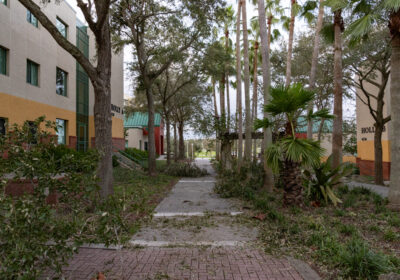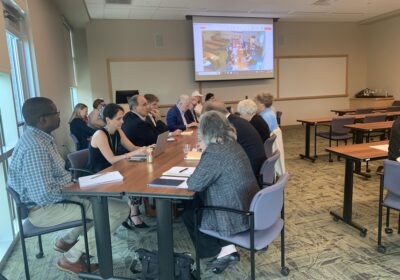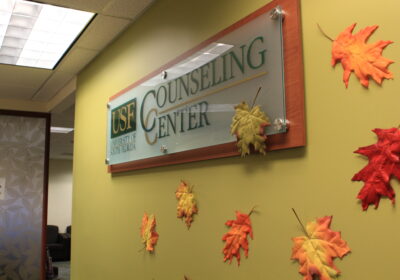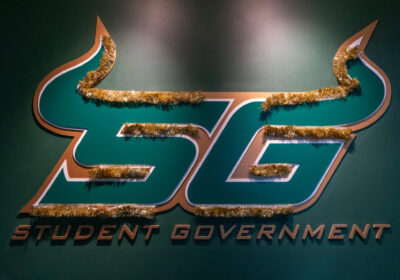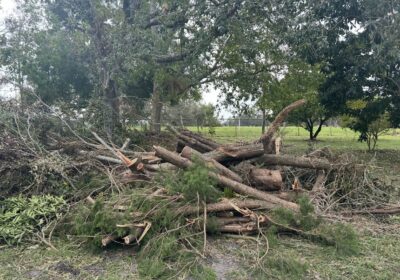USF looking to expand Classroom Capture for the fall
Students absent from class may soon be able to listen to a lecture they missed through Classroom Capture a service that may expand starting in fall.
As part of a pilot program during the spring semester, Classroom Capture was offered by 11 professors with large lecture classrooms, high percentages of traveling student-athletes or a traditionally large population of withdrawals or D and F grades.
Using Panopto software, professors recorded audio from 10 lectures each that were placed online and could be downloaded by students.
The Classroom Capture committee, made up of professors from the College of Education and formed to initiate and evaluate the program through a study, met with the Faculty Senate executive board and members of the Provosts Office on Wednesday to share its recommendations for future use of the service.
Committee Chair and College of Education Dean Colleen Kennedy said future participation in Classroom Capture would be voluntary for both students and faculty.
We are recommending that the university designate those courses that are going to be captured so students realize beforehand and have some choice, she said.
Five colleges participated in the initial study: education, engineering, arts and sciences, business and behavioral and community sciences. More than 1,700 students were enrolled in the participating courses.
Scot Rademaker, a doctoral student in the College of Education, said student evaluations of the service were recorded through an online survey that was open for three weeks at the end of the semester. It received 452 responses from students, of who 390 reported that they used the service. Ninety-six percent of students who used the service said they were satisfied, and 89 percent said the service had a positive impact on their learning.
Meanwhile, eight of the original 11 participating faculty members completed a faculty questionnaire. Of the eight, 88 percent said they were satisfied with the service. Fifty percent of faculty members thought Classroom Capture made a positive impact on student learning with the other half saying they perceived neither a positive nor negative impact of Classroom Capture on student learning.
Rademaker said both students and faculty were asked about the perceived impact of Classroom Capture on attendance.
While faculty were evenly split on the impact, 26 percent of students said there was negative impact on attendance and 59 percent said there was no impact, while 13 percent were undecided.
College of Medicine professor Marzenna Wiranowska, who did not contribute to the study, said USF Health has used a similar service for the last few years that recorded both audio and video. She said as USF expands its offering of Classroom Capture, attendance may decrease.
Based on our experience, I would say you will go through a time that probably you will see very few students if you take attendance there should be no problem but if you let them decide, I think thats what will happen. Then there will be a group that says Well, I would rather be there, and there will still be one group that wont come.
USF offers another medium for faculty members to post video lectures online through Netcast, but Netcast, which has been offered at the university since 1997, is not compatible with Linux or Apple mobile devices such as iPad or iPhone.
Kennedy said because students have indicated that Classroom Capture is something they would really want, she foresees the student-paid technology fee would be an appropriate source for increased offerings in the future. All students pay 5 percent of tuition per credit hour toward the tech fee.
Kennedy said the service is not meant to replace the classroom experience.
Its not a USF-designated online learning experience, she said. (How) it can be used is for a student who is on jury duty, for a student who is playing basketball, for a student that has such conditions that they cannot regularly attend and have to miss class.
Diane Williams, director of the Center of 21st Century Teaching Excellence, said the offering could save the university costs normally associated with transmitting individual class notes, materials and assignments to student-athletes who are forced to miss classes.
If you look at student-athletes, where about 500 students miss about 5,000 classes annually and the resources that are put behind to support those 500 missed courses, if this could contribute to eliminating some of the courses going forward because they would have ready access to the classroom experience, then maybe therell be savings.
The Faculty Senate will wait to speak further with Provost Ralph Wilcox, who was not in attendance at the meeting, before taking further actions to expand the service.

